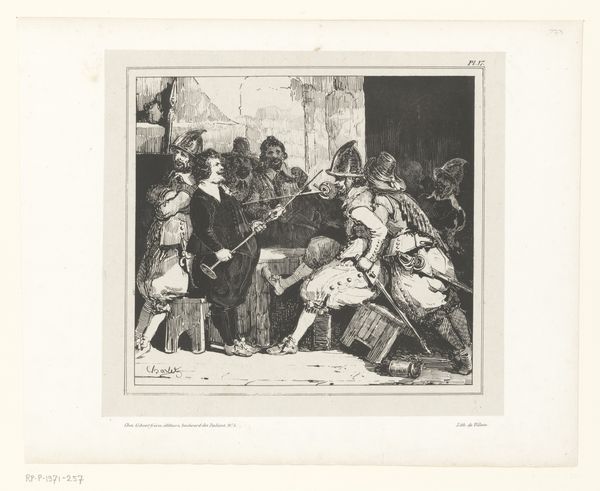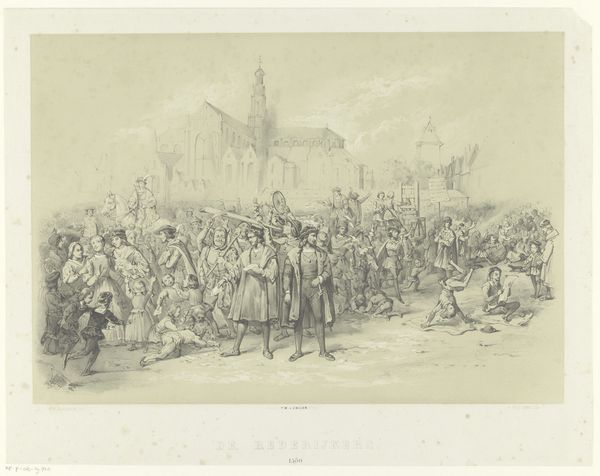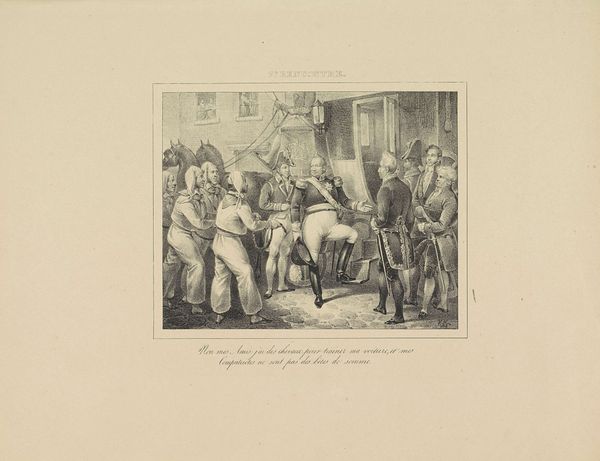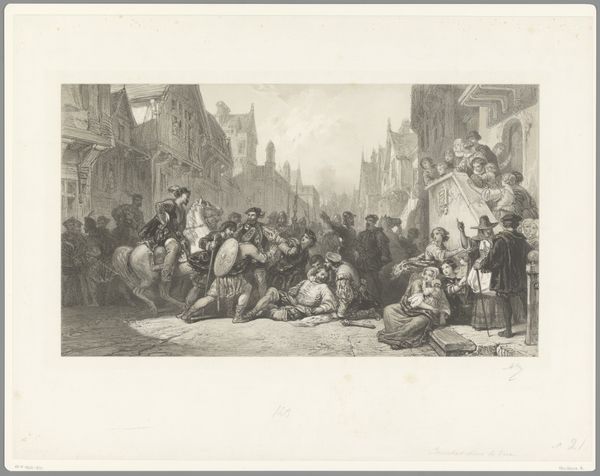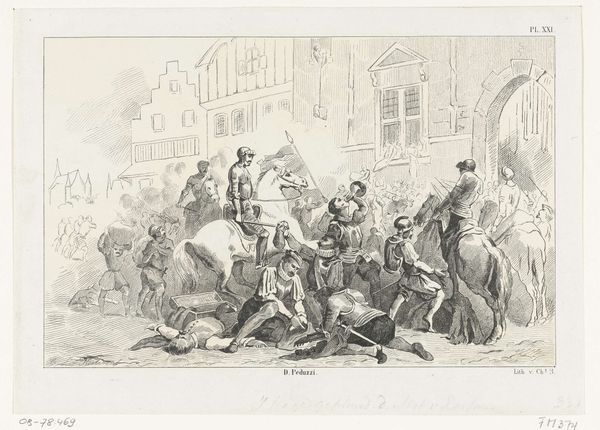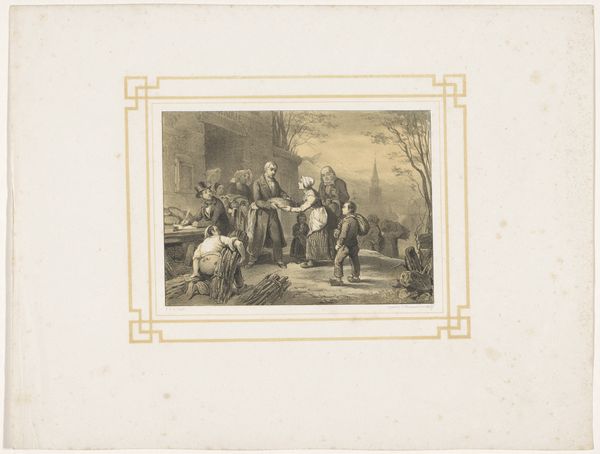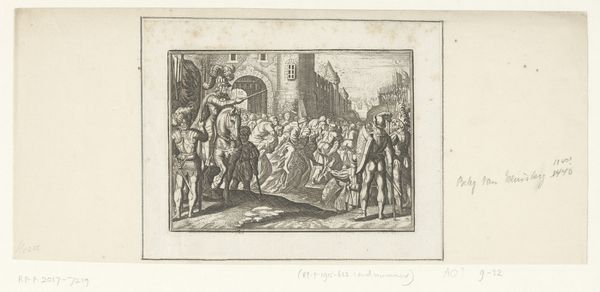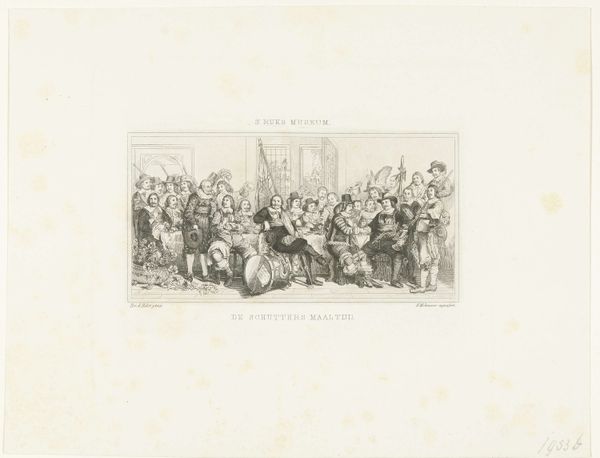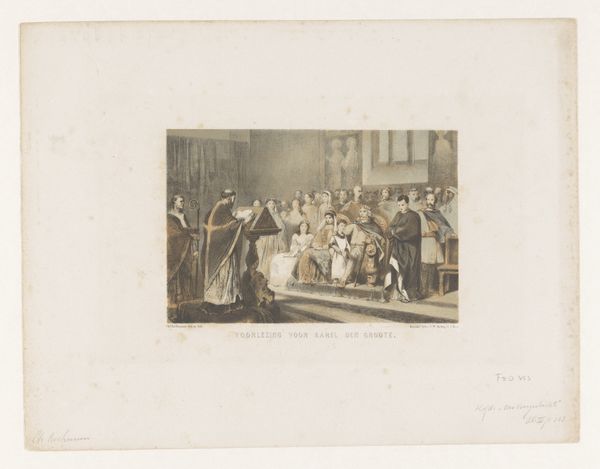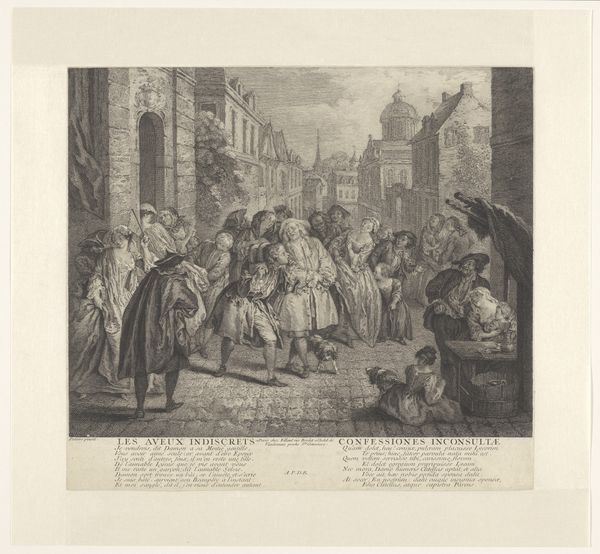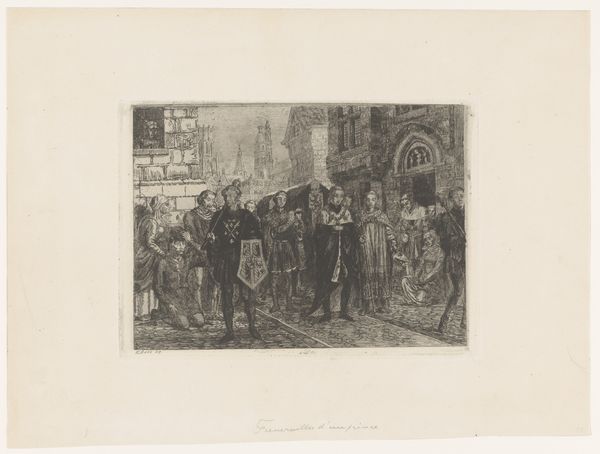
graphic-art, print, engraving
#
graphic-art
# print
#
figuration
#
line
#
genre-painting
#
history-painting
#
engraving
Dimensions: height 200 mm, width 246 mm
Copyright: Rijks Museum: Open Domain
Curator: This print by William Unger, titled *Entry of the Nobles into Brussels, 1566*, captures a historical moment. Executed between 1871 and 1873, it’s an engraving, so a print, housed right here at the Rijksmuseum. Editor: My first thought? Chaos. Beautiful, intricate chaos, rendered in these stark lines. The energy just leaps off the page; you can almost hear the rumble of hooves and the shouts of the crowd. Curator: Exactly! Unger's using this linear style to bring order to the composition but really this is about picturing socio-political transformation. This scene commemorates a specific moment, the arrival of nobles presenting a petition to the regent, Margaret of Parma. The event really marks an important moment in what led to the Dutch Revolt. Editor: The scale is interesting; this feels monumental, even in print form. Those horses are so noble! Do you get the sense that Unger is trying to mythologize this historical moment? I can’t help feeling it has more impact by focusing on a mood rather than detail. Curator: Absolutely. These historical genre paintings helped form national identity, and I'm interested in the choice to focus on mood through this medium. The print democratizes the imagery in a way painting could not. These engravings were designed for mass distribution. What impact did popularising these images have? Editor: Hmm, good question! It’s interesting to think about how an image like this solidifies historical narratives in the collective memory. It's as though history becomes theatre; it plays on emotion as much as fact. The swirling figures kind of add to a legend. Curator: True. Unger, working so much later than the event itself, could selectively edit the past to make points to his contemporaries. In this instance it feels quite politically driven to bring forth those sentiments of nationhood. It makes the past so immediately available, doesn’t it? Editor: It does, and on some level, seeing history re-imagined like this forces me to consider what future artists will want to emphasize about us today. It makes history malleable, in an odd way. Curator: And isn’t that the paradox and enduring power of art – that it allows us to interpret, adapt, and re-experience history through such intensely subjective eyes? Editor: Absolutely. I will look at this differently next time and remind myself to question the image.
Comments
No comments
Be the first to comment and join the conversation on the ultimate creative platform.
